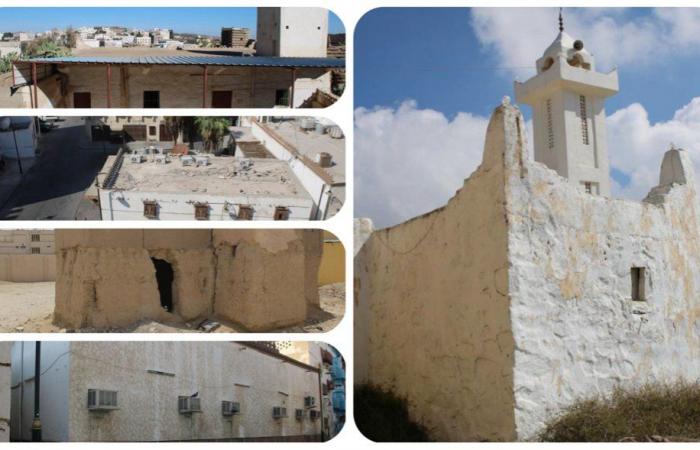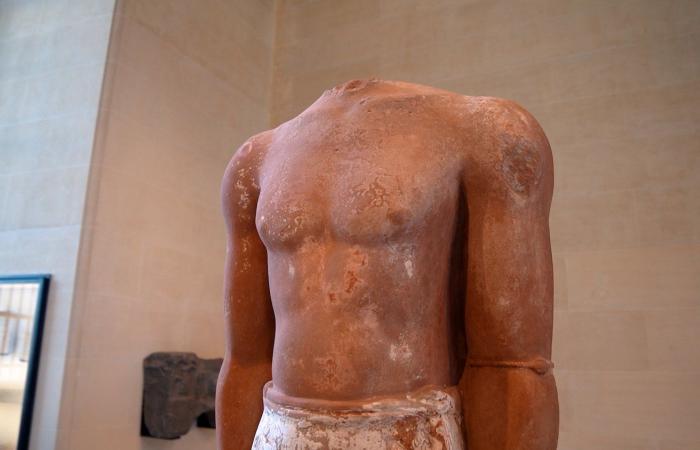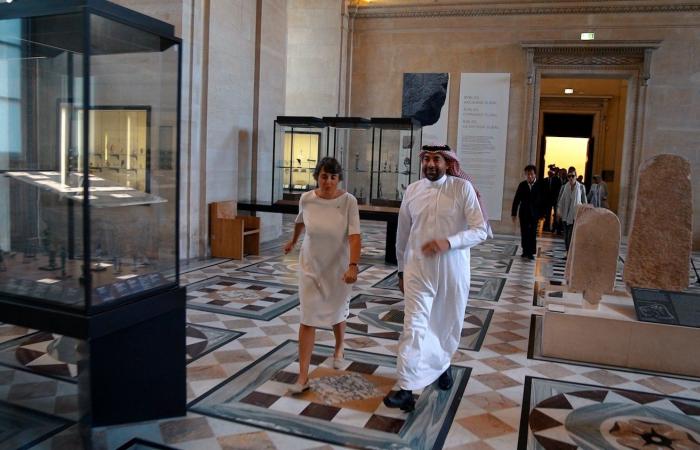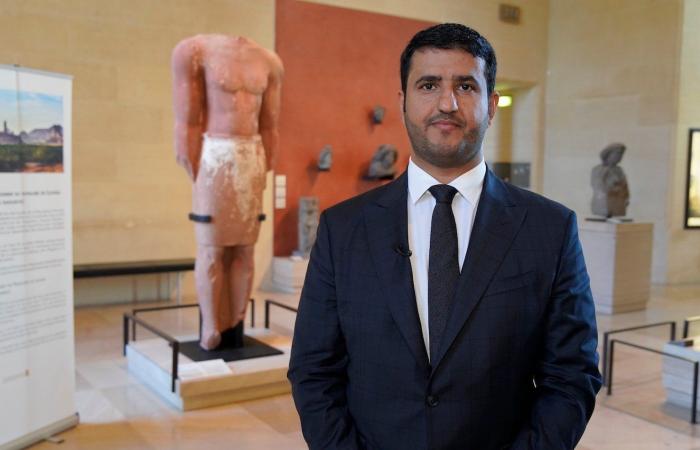Thank you for reading the news about Qassim, Hail mosques to be restored and now with the details
Jeddah - Yasmine El Tohamy - Lihyanite ‘monumental statue’ from Saudi Arabia’s AlUla goes on display at Louvre in Paris
PARIS/ROME: A rare statue from the Lihyanite period that was found in northwestern Saudi Arabia has been unveiled at the Louvre Museum in Paris. Dating from the 5th to 3rd centuries BCE and measuring 2.3 meters in height, the statue represents a realistic rendering of a masculine figure standing upright and in a static frontal pose.
Carved in sandstone and positioned with its arms aligned to either side and its legs straight, the 800kg statue, which is missing its head, most probably depicts a Liyhanite king, if not a priest or a praying figure.
The statue’s unveiling on Tuesday in the Louvre’s hall of Oriental Antiquities is significant in that it marks the beginning of a collaboration between French museums of heritage and the Royal Commission for AlUla (RCU).

“The statue is a very important symbol of France’s cultural cooperation with Saudi Arabia,” Laurence Des Cars, director of the Louvre Museum, told Arab News.
“It is a masterpiece of ancient sculpture that testifies to the archaeological research undertaken by the Kingdom of Saudi Arabia for more than 20 years, often in collaboration with France.
“We are very happy to be able to present for five years to visitors to the Louvre this masterpiece in the context of our collections of the Arabian Peninsula. It stands as a strong symbol of this collaboration.”

The statue was discovered at the Dadan archaeological site in the oasis of modern AlUla, in northwestern Saudi Arabia, during excavations conducted by teams directed by King Saud University in Riyadh from 2003 to 2019.
It dates back to around 2,800 years ago, when Dadan was one of the most important trade route stations of the ancient world. Around the second half of the 1st millennium BCE, the Dadan kingdom was ruled by the kings of the Lihyan tribe, who retained power for several centuries.
“This is the first Lihyanite statue found in northwestern Saudi Arabia that will be exhibited for five years at the Louvre after an official agreement between the Louvre and the RCU,” Dr. Abdulrahman Alsuhaibani, acting collections executive director for the RCU, told Arab News.

“Last November, during the archaeological excavations at the sanctuary that has already been excavated by King Saud University, another statue was found of almost the same size as this one that is on display today. But the second one is currently undergoing conservation and restoration.
“We recovered the statue, we managed to stabilize it, and now we are working and making efforts to conserve it before putting it on display during the exhibition.”
Several colossal statues, believed to depict kings and priests, were discovered between 2005 and 2007 during archaeological excavations of the sanctuary of Dadan led by researchers from King Saud University.
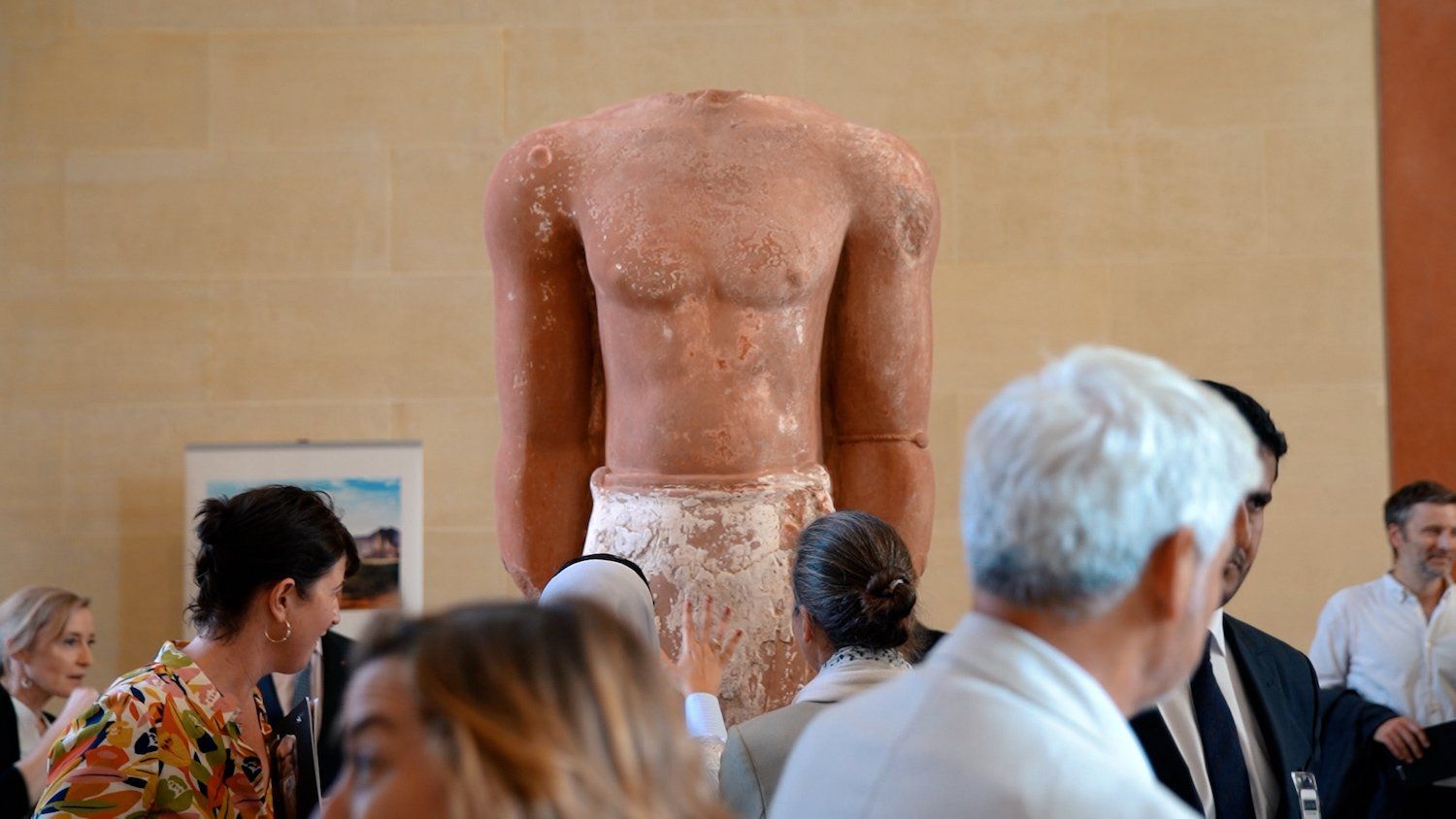
“The team from the King Saud University moved to the site of Dadan where a long scientific project was launched to excavate one of the most important archeological sites in the northwest of the Kingdom,” Saeed Al-Saeed, who was dean of culture and archaeology at King Saud University when the statue was discovered, told Arab News.
“After the work started, further discoveries were made and Dadan city and some of its architectural details were discovered. Key discoveries and artifacts included huge statues, one of which is on display today at the Louvre.”
Experts say the statue dates back to the period when the Lihyan kingdom controlled the ancient caravan route from their capital in what is today known as AlUla, historically located along the ancient incense routes that ran from southern Arabia, north into Egypt, and beyond.

“Few civilizations have not been studied: Assyrians and Egyptian civilizations have all been studied,” Amr Al-Madani, CEO of the RCU, told Arab News. “What remains now is to unpack the role of Lihyan and Dadan, a civilization that ruled northern Arabia from AlUla.”
A repository of 200,000 years of history, AlUla is quickly becoming Saudi Arabia’s center for tourism and culture. Located in modern Saudi Arabia’s Madinah province in the Hejaz region, it is also home to the UNESCO World Heritage site of Hegra.
“The amount of undiscovered archaeology and the discovered archaeology that has not visited the world is magnificent in Saudi Arabia,” said Al-Madani. “We have recently unpacked many findings in AlUla.
Some of these are monumental sculptures. They are currently being studied, renovated and, certainly, will join their well-deserved place in the global network of world museums.”
The city of Dadan, the former site of both the Dadan and the Lihyan kingdom capitals, was first discovered by English poet and explorer Charles Montagu Doughty in 1876.
“Little remains of the old civil generations of el-Hejr, the caravan city; her clay-built streets are again the blown dust in the wilderness,” he wrote in his “Travels in Arabia Deserta,” published in 1888.
“Their story is written for us only in the crabbed scrawlings upon many a wild crag of this sinister neighborhood, and in the engraved titles of their funeral monuments, now solitary rocks, which the fearful passenger admires, in these desolate mountains.”
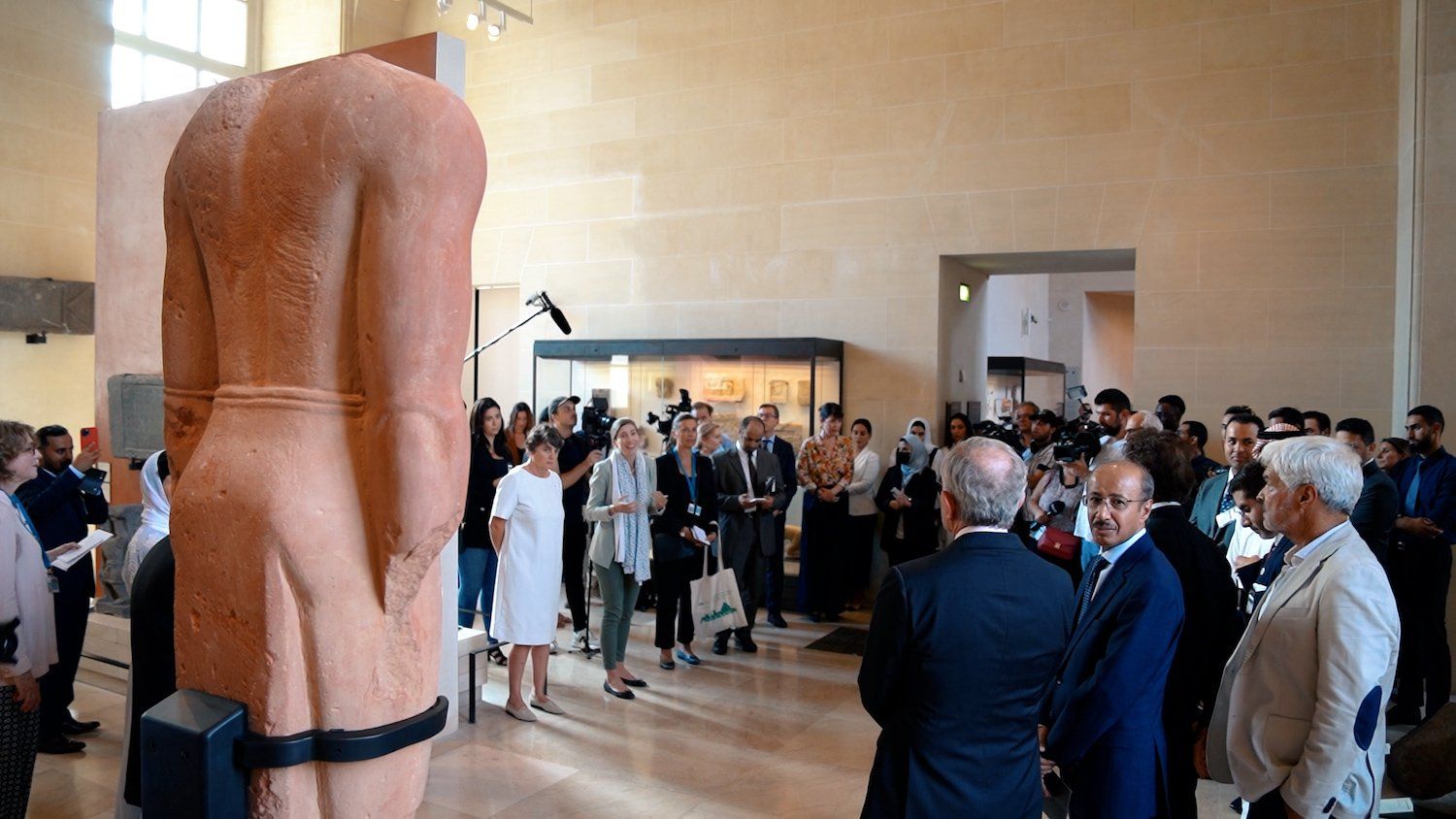
In 1909 and 1910, the site was carefully documented by the French Dominicans A. Jaussen and R. Savignac, who identified it as the biblical Dedan, mentioned in the Old Testament among the main caravan towns of Arabia.
Thanks to the hundreds of inscriptions in Dadanitic found at the site and among its surroundings, it was established that the city had been the capital of two successive kingdoms: First the oasis kingdom of Dadan in the first half of the 1st millennium BCE and then the vast tribal kingdom of Lihyan in the second half.
The statue was previously displayed as part of “Roads of Arabia,” a traveling exhibition that first appeared at the Louvre Abu Dhabi from November 2018 to February 2019, before heading abroad to Rome, Berlin, Paris, Barcelona, St. Petersburg, Houston, Tokyo, and beyond.
Roads of Arabia celebrated the archaeological treasures of Saudi Arabia and the UAE, exploring how the civilizations of the Arabian Peninsula served as a meeting point of the Indian Ocean, the Horn of Africa, Egypt and Mesopotamia.
Now, the new Lihyanite display in Paris offers a fresh opportunity to examine these ancient civilizations and the role they played in shaping the region.
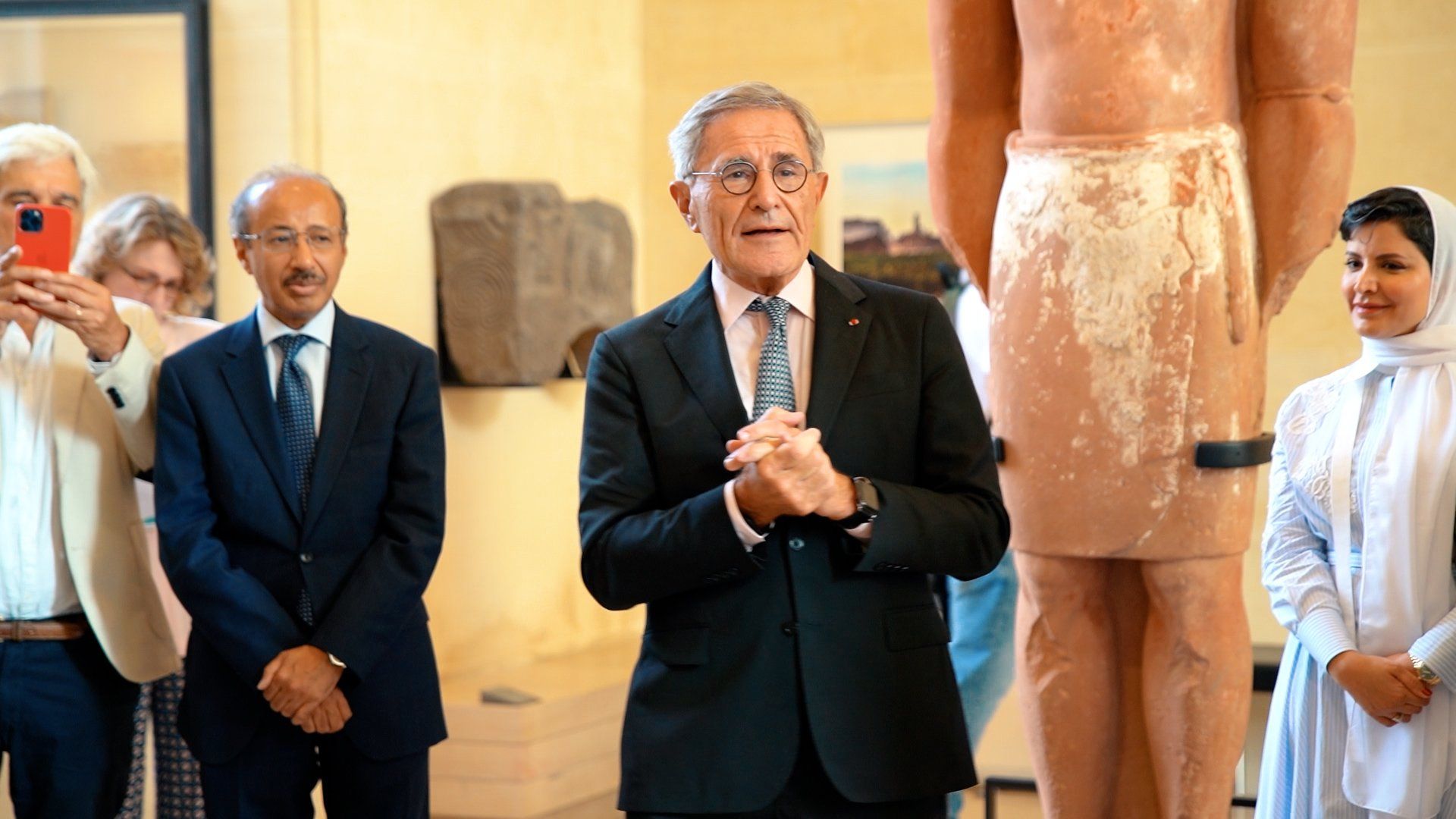
Determining the identity of who the statue is supposed to depict, however, will require careful study of the archaeological record and a fine examination of the details.
“We know that this statue is a Lihyanite statue that was found in a layer dated to the Lihyanite period, during the second half of the first millennium BC,” said Alsuhaibani.
“There is also another statue that was also found at the same layer. The word “king” was found written on the back of another statue that resembles the one on display today.”
The statue is dressed in a short tunic while on the body are traces of red pigment. On his left arm he wears a bangle that possibly is decorated with a pearl, worn in the crease of his elbow, while beneath his right foot there are the remains of the sole of a shoe, most likely a sandal.
Of note is the particular attention given to the rendering of the man’s anatomical form and its smooth surface, intricately depicting the muscles of the torso, abdomen, and the remains of the limbs — characteristic elements of the Lihyanite school of sculpture.
According to archaeologists and art historians, the statue is distinguished by its particular local style and reflective of artistic influences from ancient Egypt and Greece.
Preserving and celebrating the ancient heritage of Saudi Arabia forms a key part of the Kingdom’s Vision 2030 social reform and economic diversification agenda, which includes investment in tourism infrastructure and attractions.
Among these developments is the “Journey Through Time” master plan, which will see AlUla valley transformed into a living museum designed to immerse visitors in 200,000 years of natural and human history.
“AlUla is the world’s largest living museum and a place of heritage for the world, holding thousands of years of history of cultural exchange,” said Al-Madani.
“Cultural exchange is an economic activity. It creates a place for people to know each other better and trade in business. Today we trade commodities, we trade products and what we really have to encourage now is we trade culture as the baseline of economic growth.
“What we see here is a king of Lihyan — a civilization that dominated northwest Arabia and played a significant role in the incense route and trade network of the past. Today the king stands here to welcome everyone back to AlUla, as we establish it as a major oasis of exchange, art, culture, heritage and hopefully fantastic memories for life.”

These were the details of the news Qassim, Hail mosques to be restored for this day. We hope that we have succeeded by giving you the full details and information. To follow all our news, you can subscribe to the alerts system or to one of our different systems to provide you with all that is new.
It is also worth noting that the original news has been published and is available at Arab News and the editorial team at AlKhaleej Today has confirmed it and it has been modified, and it may have been completely transferred or quoted from it and you can read and follow this news from its main source.

